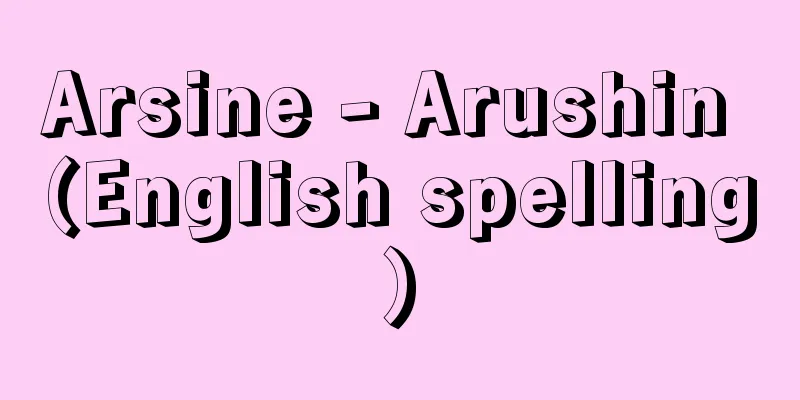Separation of Shinto and Buddhism

|
Also known as Shinbutsu Bunnen, this refers to the religious policy implemented by the new government shortly after the Meiji Restoration that prohibited syncretism between Shinto and Buddhism and sought to separate the two. Since the introduction of Buddhism, Shintoism was gradually assimilated with Buddhism over a period of more than 1,000 years, and a long period of Shinto-Buddhist syncretism (Shinbutsu Konko) continued. In the early modern period, anti-Buddhist ideas in Confucianism and National Learning led to a movement to eliminate Buddhist elements from Shintoism, and local separation of Shinto and Buddhism was carried out in the Mito Domain (Ibaraki Prefecture), Okayama Domain, and Aizu Domain (Fukushima Prefecture). This anti-Buddhist sentiment grew even stronger at the end of the Edo period, and radical temple reorganization took place in the Mito Domain and Satsuma Domain (Kagoshima Prefecture). In addition, the last lord of Tsuwano Domain in Iwami Province (Shimane Prefecture), Kamei Koremi, carried out his own unique shrine and temple reform, which became a blueprint for the religious policy of the Meiji Restoration government. The Meiji government, in an attempt to revive the Jingikan and realize a system of unity of religion and politics, appointed Tsuwano Domain lord Kamei Tsuneaki, Fukuba Bisei, and Okuni Takamasa, and implemented the first religious policy, the separation of Shinto and Buddhism, nationwide. First, on March 17, 1868 (Keio 4), the Jingi Bureau ordered the head priests and shrine priests of the various shrines in the provinces to return to secular life, and then on the 28th, the Dajokan issued the Shinbutsu Bunri Rei (Shinbutsu Bunri Rei), announcing nationwide the following: (1) an investigation into shrines that use Buddhist names such as gongen, and (2) a prohibition on using statues of Buddha as sacred objects. After this, all Buddhist elements were removed from Shinto-Buddhist syncretistic shrines across the country, but because there were many cases of extreme Shinto-Buddhist separation, such as at Hiyoshi Sanno Shrine in Omi (Shiga Prefecture), the Dajokan issued an order on April 10 of the same year to exercise caution in implementing Shinto-Buddhist separation. However, the government's orders were still not fully implemented, and in various domains such as Naegi Domain (Gifu Prefecture) and Toyama Domain, as well as areas directly controlled by the government, local officials ignored the order and continued to implement strong suppression and anti-Buddhist policies, leading to a situation known as anti-Buddhist and anti-religious behavior that went beyond Shinto-Buddhist separation, such as the merging and abolishment of temples, which continued until around 1874 (Meiji 7). [Sakamoto Koremaru] "The Meiji Restoration of the Gods - Shinbutsu Bunri and Haibutsu Kishaku" by Yasumaru Yoshio (Iwanami Shinsho)" ▽ "Shinbutsu Bunri" by Keimuro Fumio (1977, Kyoikusha) [Reference] | |Source: Shogakukan Encyclopedia Nipponica About Encyclopedia Nipponica Information | Legend |
|
神仏判然ともいい、主として明治維新直後に行われた新政府による神仏習合(しゅうごう)の禁止と両者の分離を図る宗教政策をいう。 仏教伝来以来、神道(しんとう)は1000年余にわたって徐々に仏教と習合し、長らく神仏習合(神仏混淆(こんこう))の時代が続いた。近世になると儒学や国学の排仏思想によって、神道から仏教色を排除する動きが出現し、水戸藩(茨城県)や岡山藩、会津藩(福島県)で地域的な神仏分離が行われた。この排仏意識は幕末に至っていっそう強まり、水戸藩や薩摩(さつま)藩(鹿児島県)では過激な寺院整理が行われた。また石見(いわみ)国(島根県)津和野(つわの)藩でも最後の藩主亀井茲監(これみ)によって独自の神社・寺院改革が行われ、維新政府の宗教政策の青写真となった。 維新政府は神祇官(じんぎかん)を再興して祭政一致の制度を実現しようと、この津和野藩藩主亀井茲監や福羽美静(ふくばびせい)、大国隆正(おおくにたかまさ)を登用し、最初の宗教政策ともいえる神仏分離を全国的に展開させた。まず1868年(慶応4)3月17日、神祇事務局は、諸国神社に仕える僧形(そうぎょう)の別当(べっとう)・社僧に復飾(還俗(げんぞく))を命じ、ついで28日太政官(だじょうかん)は神仏分離令(神仏判然令)を発して、(1)権現(ごんげん)などの仏語を神号とする神社の調査、(2)仏像を神体とすることの禁止、を全国に布告した。これ以後全国の神仏混淆神社から仏教色がすべて排除されるが、近江(おうみ)(滋賀県)日吉(ひえ)山王社のように過激な神仏分離が多発したので、太政官は同年4月10日には、神仏分離の実施には慎重を期すよう命じた。しかし、政府の威令がいまだ行き届かず、苗木(なえぎ)藩(岐阜県)や富山藩などの各藩や政府直轄地では、地方官がこれを無視して強硬な抑圧・廃仏策を進めたため、寺院の統廃合など神仏分離を超えた廃仏棄釈(きしゃく)とよばれる事態が1874年(明治7)ごろまで続いた。 [阪本是丸] 『安丸良夫著『神々の明治維新――神仏分離と廃仏毀釈』(岩波新書)』▽『圭室文雄著『神仏分離』(1977・教育社)』 [参照項目] | |出典 小学館 日本大百科全書(ニッポニカ)日本大百科全書(ニッポニカ)について 情報 | 凡例 |
Recommend
Thotmes IV
…The trade area extended from the Aegean Islands ...
Pen-related scandal - Hikka
〘 noun 〙 When a book, published article, or commen...
High-quality spring water - high-quality spring water
A migrant monk of the Obaku sect who was active i...
Endothermic reaction - Endothermic reaction
A chemical reaction is a reaction that absorbs he...
One packet - one handful
〘 noun 〙① One package. One package. ※Masukagami (A...
Kingchi (English name) Pseudosciaena manchurica
A marine fish of the family Sciaenidae in the orde...
Bachelor
...It can also mean the exam to obtain this quali...
Poetry and Poetics - Shishiron
A poetry magazine. First published in September 1...
Charlot, A. (English spelling) CharlotA
…In the 20th century, the erotic dances of dancer...
Ergotoxine
…Cows are weaker than horses. [Medicinal] Ergot c...
Gyeonggama
[Noun] A tea kettle made in Kyoto. They began to b...
Cladonia arbuscula (English spelling) Cladoniaarbuscula
… [Hiroyuki Kashiwatani]. … *Some of the terminol...
Iwaya Shoten
…Cigarettes that did not require a cigarette hold...
Vanadium Oxide - Vanadium Oxide
[ I ] Vanadium(II) oxide: VO (66.94). Also known ...
Chrysanthemum intestine - Kikuwata
〘Noun〙 The intestines or milt of a cod . It is nam...









